Palau de la Música Catalana and Hospital de Sant Pau, Barcelona
Outstanding Universal Value
Brief synthesis
Palau de la Música Catalana and Hospital de Sant Pau are two of the finest contributions to Barcelona’s architecture by the Catalan Modernista architect, Lluís Domènech i Montaner. The Palau de la Música Catalana is an exuberant steel-framed structure full of light and space, decorated by the leading artists of the period. It has uniqueness, authenticity and beauty and is an unparalleled Modernista example of a public concert hall whose symbolic, artistic and historical value is universal. The Hospital de Sant Pau is also daring in terms of design and decoration, although perfectly suited to the needs of patients. Of exceptional interest, it is the most outstanding example of its kind because of its beauty, size and unique design.
The Palau de la Música Catalana was exceptional from the moment of its conception, because of two very important innovative factors: a special concept of space and a very intelligent use of the new technologies developed during the industrial revolution. The reticular steel frame, which made possible extensive open floor spaces with an absence of structural facades, replaced by a glass skin, was an innovative architectural concept of great importance. The whole building was designed as an interactive space, minimising the distinction between exterior and interior by making the best possible use of natural light, a key factor in enjoyment of the interior space. All of this is brought together by the use of traditional arts, with a unique use of decorative motifs, of great authenticity and beauty, in an unprecedented example in the Modernista style (a movement parallel to Art Nouveau) of a concert hall with universal symbolic, artistic and historic values.
The complex of buildings that make up the Hospital de Sant Pau succeeded the Hospital de la Santa Creu, built in the early 15th century. The Hospital de Sant Pau is of great importance as the largest hospital complex in the Modernista style. Here Domènech i Montaner found original, daring solutions to the problems posed by the needs of the contemporary hospital (ventilation, hygiene, specialities, interdisciplinary medicine, etc.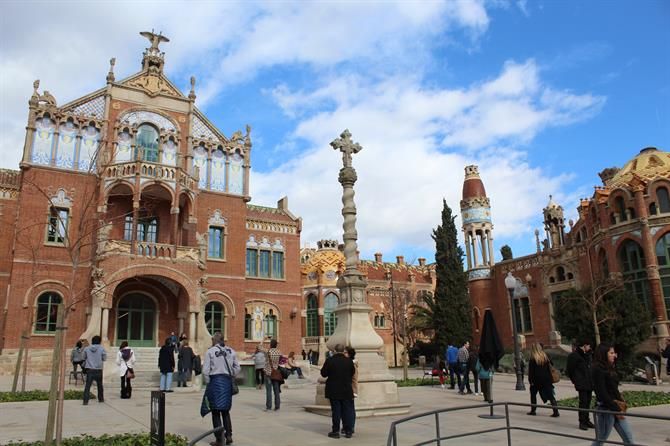
These are two of the earliest and finest examples of Modernista architecture, of exceptional importance, both as manifestations of human creative genius and works of art, because they offered new architectural, typological and artistic solutions to facilities for music and medicine.
Criterion (i): The Palau de la Música Catalana and the Hospital de Sant Pau in Barcelona are masterpieces of the imaginative and exuberant Modernista style that flowered in early 20th century Barcelona. They are the work of Lluís Domènech i Montaner, one of the acknowledged leaders of this influential architectural movement.
Criterion (ii): The Palau de la Música Catalana and the Hospital de Sant Pau in Barcelona are outstanding examples of the Catalan Modernista style, movement that played an important role in the evolution of 20th century architecture.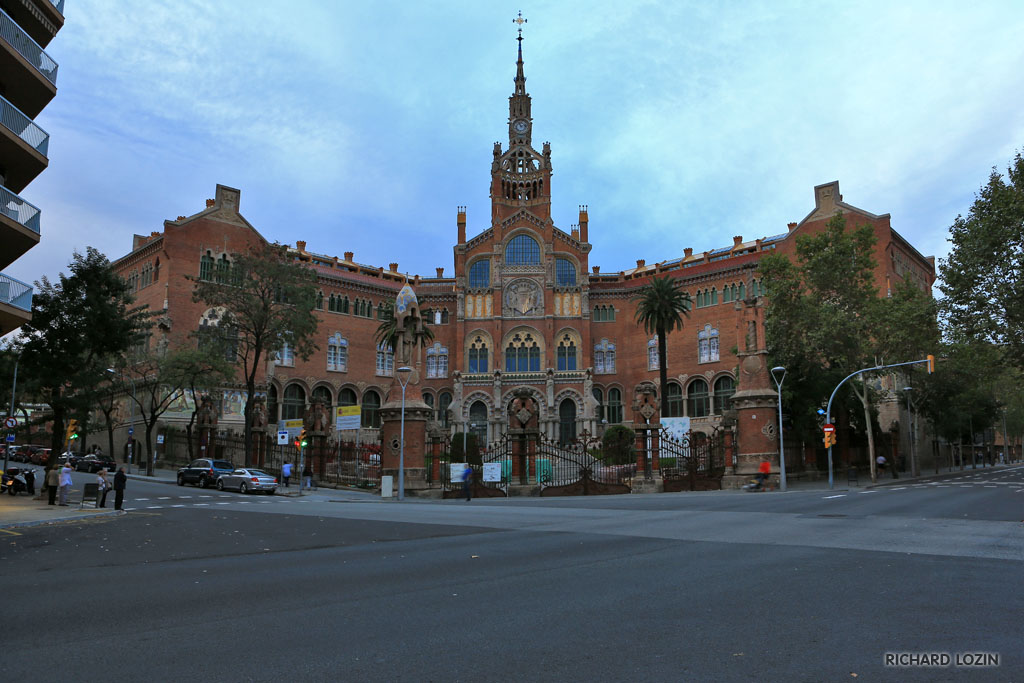
Criterion (iv): The Palau de la Música Catalana and the Hospital de Sant Pau are two of the finest (and earliest) examples of the Modernist style in architecture and of exceptional importance, both as manifestations of human creative genius and works of art.
Integrity
The property includes the whole of both its components. The boundaries of both monuments include all the attributes that express their Outstanding Universal Value.
A major comprehensive restoration programme (structural, interior and facades), as well as a modernisation of the functional requirements (acoustics, thermal insulation, etc.) was carried out on the Palau de la Música Catalana in 1988. The Hospital de Sant Pau has been undergoing continual maintenance since it was built. Our Lady of Mercy pavilion was restored in 1979–1980 and the Clock Tower in 1985–1989. Because of the difficulty of adapting this historic building to modern medical requirements, hospital services were transferred to new buildings on the north of the site, making possible comprehensive restoration of the original buildings.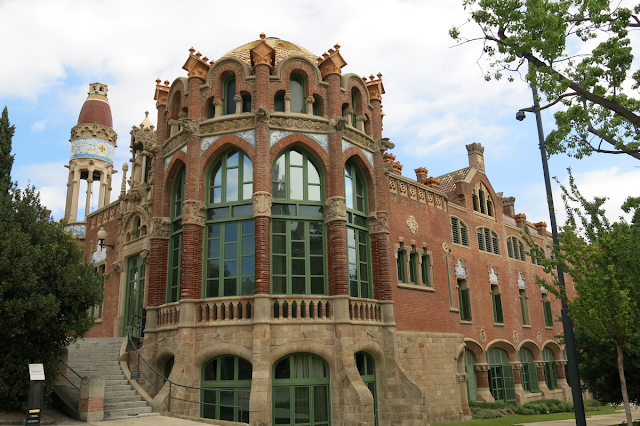
Because of these works to maintain the integrity of the structures, adverse factors affecting them are largely insignificant and of external origin (air pollution; dust and water (rain/water table)). Appropriate measures are being taken to suppress them, such as vehicle circulation limitation.
Authenticity
Both monuments possess a high degree of authenticity. Great care has been taken to replace damaged elements such as external tiles with exact copies of the originals. In the Palau de la Música Catalana, ingenious methods have been used to install modern technical equipment such as air conditioning, soundproofing, etc., and to reinforce structural elements, as well as in the careful restoration of the facades. It retains its original use as a concert hall. The Hospital de Sant Pau underwent a comprehensive restoration under a phased plan in 2009–2016. It was intended for the restored pavilions to be used for purposes such as research and health, or as offices for various international organizations.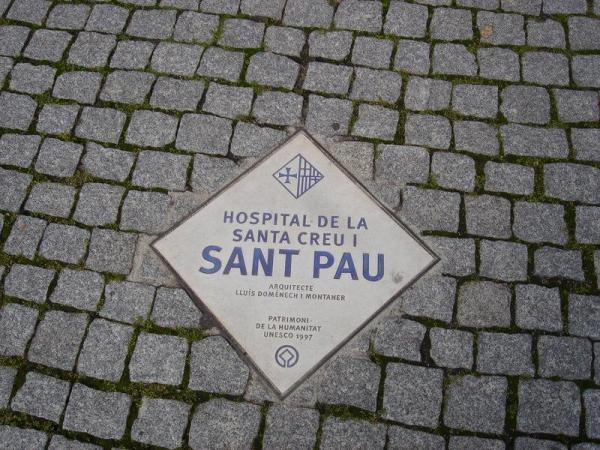
Protection and management requirements
The Palau de la Música Catalana was declared a national monument in 1971 and the Hospital de Sant Pau in 1978. The property has full legal protection through Law 16/1985 of 25 June, concerning Spanish Historical Heritage, Law 9/1993 of 30 September, concerning Catalan Cultural Heritage, and Decree 276/2005, concerning Territorial Commissions for the Cultural Heritage. At the Municipal level the Metropolitan General Plan and the Special Plan to protect the architectural heritage of the city of Barcelona protect the property. Other legislation such as Law 13/2002, concerning Tourism in Catalonia helps protect the property.
Business Management and Administration are carried out by the Territorial Commission for the Cultural Heritage of the City of Barcelona. Authorities such as State, Autonomous community and local level are involved in management, in both cases.
The Palau de la Música is used as a concert hall and also for public visits.
The Hospital de Sant Pau was used as a hospital until 2009. Current uses are socio-cultural, international and public visits. The Hospital de la Santa Creu i Sant Pau Foundation is the private body responsible for the management. The Board of Trustees is the overall governing body. Its members are drawn equally from the Barcelona City Council, the Cathedral Chapter and the Government of Catalonia. The management of the site is under contractual agreement between the State Party and a third party and under traditional protective measures or customary law.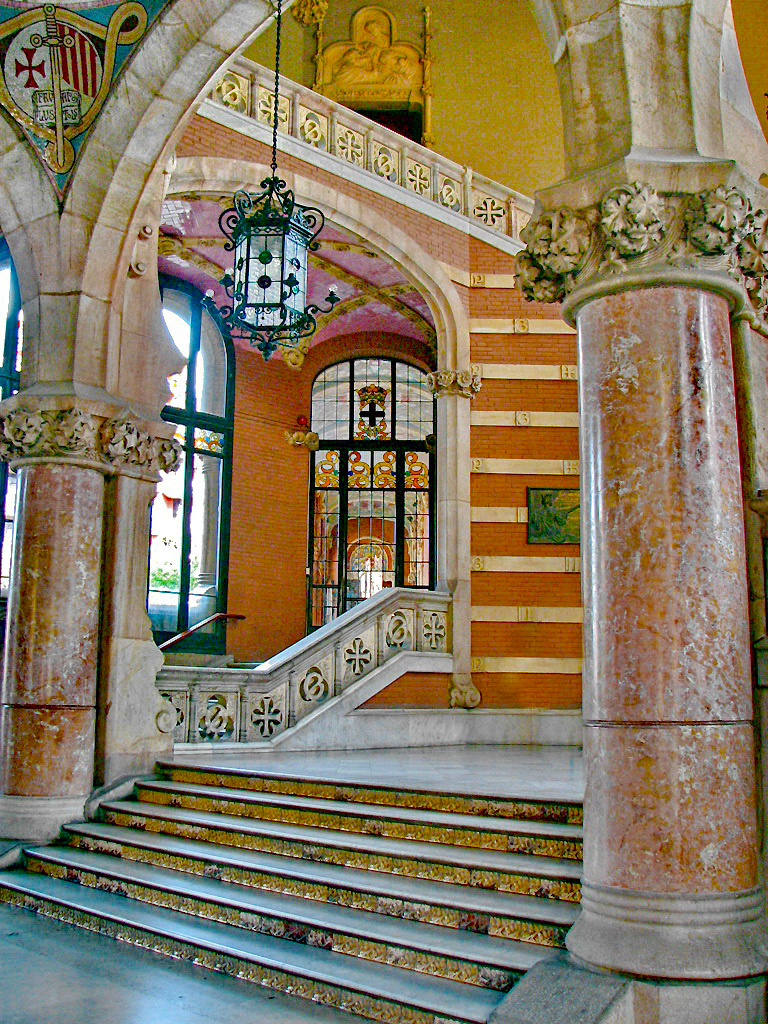
Old Hospital de Sant Pau in Barcelona
Barcelona / Sant Pau Hospital
The old Hospital de la Santa Creu i de Sant Pau in Barcelona
The old hospital de la Santa Creu i Sant Pau is one of the prime examples of Modernisme Català, the Catalan version of the Art Nouveau movement. With its main building and many pavilions, the Barcelona Hospital de Santa Creu is the largest complex of Catalan modernist architecture.
Hospital de la Santa Creu i Sant Pau – Tickets & Info |
|
| Address | Carrer de Sant Antoni Maria Claret 167 Barcelona Spain |
| Metro | Metro station Hospital de Sant Pau (Line 4) |
| Tickets |
Book tickets online |
| Opening hours |
|
| Website | santpaubarcelona.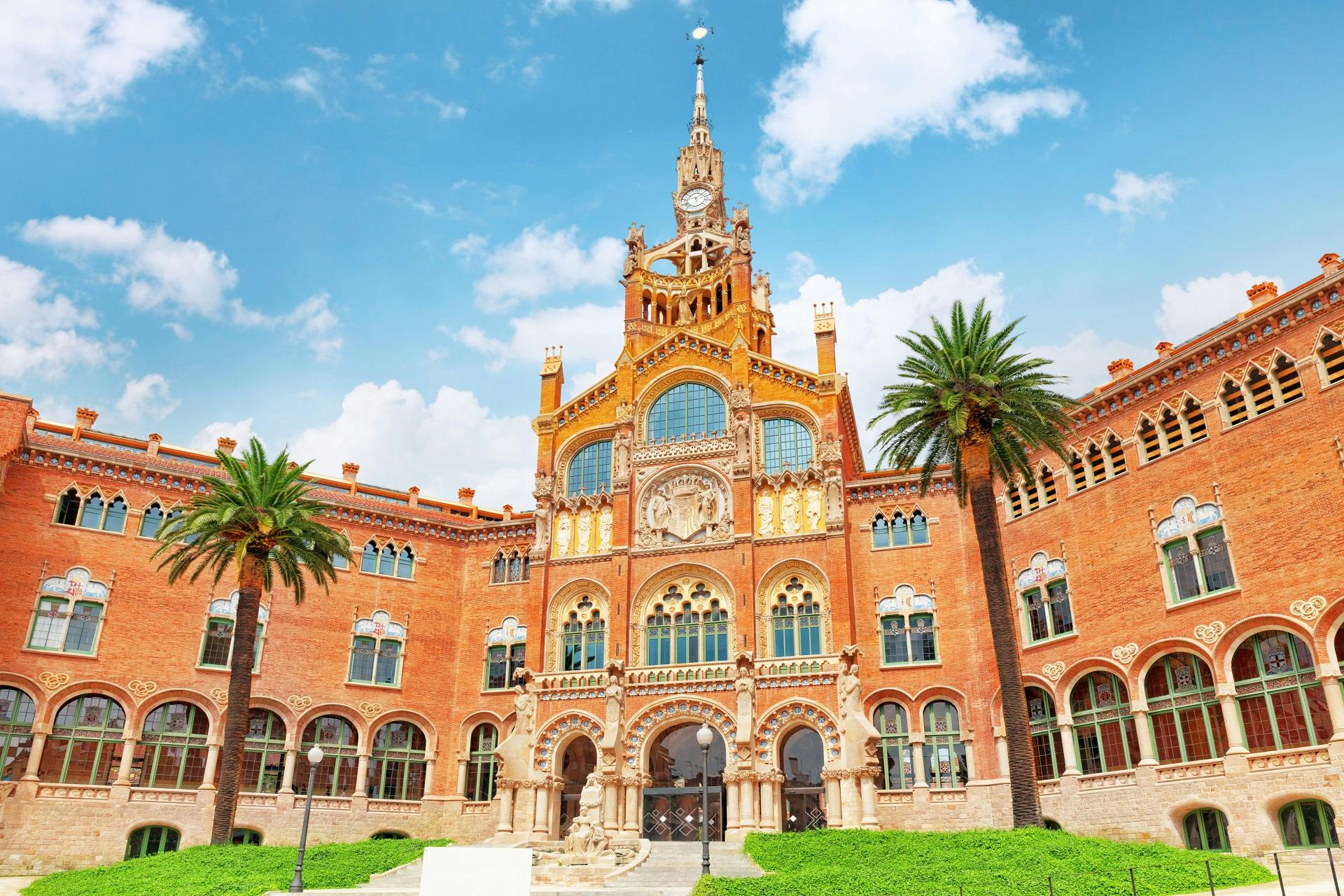 org org |
Hospital de la Santa Creu i de Sant Pau
The Hospital de Sant Pau (‘Hospital de la Santa Creu i de Sant Pau‘) is designed by architect Lluís Domènech i Montaner. The hospital is one of the prime examples of Modernisme Català, the Catalan version of the Art Nouveau movement. With its main building and many pavilions, the Hospital de Santa Creu is the largest complex of Catalan modernist architecture.
The old Hospital de Sant Pau and the Palau de la Música Catalana Catalana (also designed by Lluís Domènech i Montaner) were added to the World Heritage List by UNESCO in 1997. Several years ago, the hospital underwent a major renovation, and it’s possible to visit this unique complex on your own. The Hospital de Sant Pau is not particularly touristy, and because of its wonderful Art Nouveau architectural style with lots of ceramics and sculptures, it’s one of my personal highlights of Barcelona.
History of the Sant Pau Hospital
The Hospital de Santa Creu stems from 1401, when Barcelona’s then six hospitals merged.
Hospital Sant Pau Barcelona
Out of respect to the will of the mecenas, the name Sant Pau was added to the hospital’s name. Since then the hospital has been called the Hospital de la Santa Creu i Sant Pau.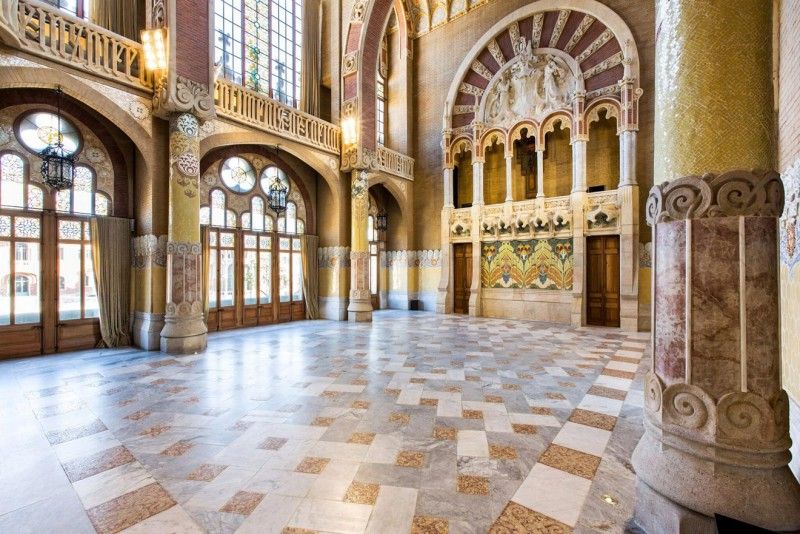
Tour of the Sant Pau hospital
During your visit to Sant Pau you can choose to walk independently through the old hospital. Book your Hospital Sant Pau tickets in advance.
Where is the Hospital de Sant Pau in Barcelona?
The main entrance is in the quarter of Eixample and is four blocks from the Sagrada Familia. It’s a good idea to combine both sights during your trip to Barcelona. If you travel by metro, the stop ‘Sant Pau’ of the L4 is the nearest one.
Our readers say
4.8
(95.83%) 13
reviews
February 28, 2023 org/Review”>
Michael: “We had an amazing trip to Barcelona city because of the interesting local tips for sightseeing, activities and best things to do in Barcelona Spain.”
Park Güell
Barcelona things to do
Magic Fountain
Sagrada Familia
Picasso Museum
Camp Nou
Montjuïc
Casa Mila
Casa Batllo
Sant Pau Hospital | Come On! Barcelona
Hospital Sant Pau is a masterpiece of modernist architecture in Barcelona that most guidebooks and bloggers don’t talk about. Most, but not us. We talk about this city curiosity on each of our excursions and highly recommend visiting it. As practice and reviews of our tourists show, this place will not leave anyone indifferent!
Sant Pau Hospital is a masterpiece of modernist architecture in Barcelona that most guidebooks and bloggers don’t talk about.
At the beginning of the 20th century, Barcelona did not have a decent general hospital.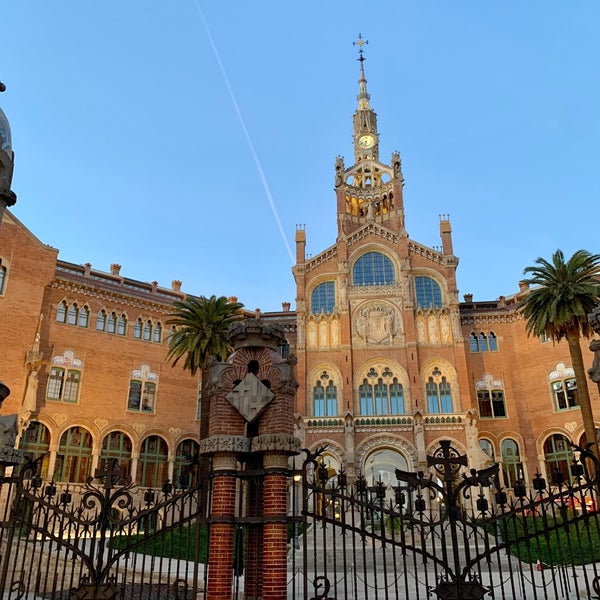
The creation of the hospital in 1902 was entrusted to Luis Domènech y Montaner, the great Catalan modernist architect.
On the territory of 9 blocks of Eixample, a new district of Barcelona, the architect decided to build 48 separate buildings: 36 medical and 12 administrative. Such an idea would allow to isolate infectious patients and separate patients. And communication between the buildings was carried out through a system of underground tunnels – all for the convenience of personnel. Thus, the hospital turned into a whole town.
Care for the sick is felt as soon as you enter the main administrative building. Even the language does not dare to call it an emergency room.
But the most important task of the architect was to create a certain mood in this city. Care for the sick is felt as soon as you enter the main administrative building. Even the language does not dare to call it an emergency room.
When you find yourself directly on the territory of the hospital, among the buildings, you feel at home. In order for the sick to recover, they need an appropriate environment: fresh air, a variety of flowers, trees – this is how the architect thought. In order to lift the spirits of patients and their families, the architect showed great ingenuity in the color scheme of each building of the hospital. The buildings are decorated with ceramics: lizards and snails peek out from the foliage of orange trees; flowers everywhere—glazed, carved, sculpted, mosaic; they are inside the arches, winding around the columns.
In the end, out of 48 buildings, only 27 were built. 16 buildings were created according to the original modernist plan: 12 by Luis Domènech y Montaner himself, and 4 by his son. Budget cuts after 1914 and changes in architecture make the later pavilions more austere without unnecessary decorative elements.
On January 16, 1930, King Alfonso XIII inaugurated the Hospital of Santa Creu and Sant Pau.
In addition to being a benchmark municipal hospital, Sant Pau has become an outstanding symbol of the architectural and cultural heritage of Barcelona and Catalonia. At 19In 78, it was declared a historical and artistic monument, and in 1997 it was included in the UNESCO heritage list. In 2009, all medical activities were transferred from the historical buildings to the modern buildings in the neighborhood.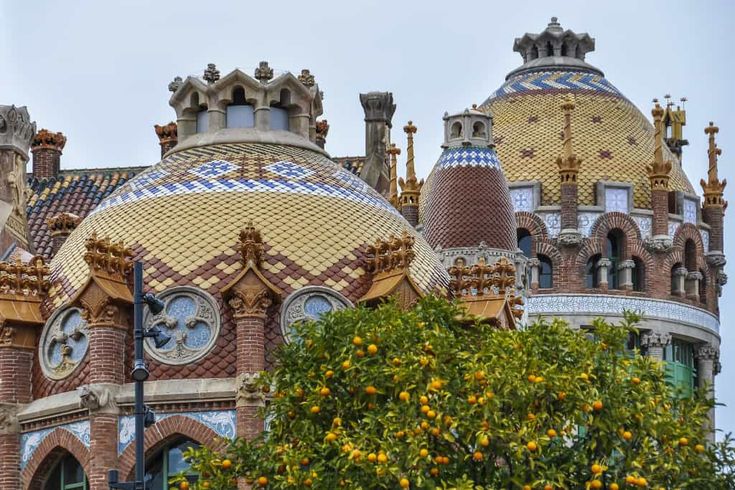
Address: Carrer de Sant Antoni Maria Claret, 167.
Opening hours: November-March from Monday to Saturday from 9:30 to 17:00, Sunday from 9:30 to 15:00; April-October Monday to Saturday from 9:30 to 19:00, Sunday from 9:30 to 15:00.
Entrance fee: 15€.
Tickets can be purchased on our website at
More articles on Barcelona Attractions
- Park Güell and Sagrada Familia. Buy your ticket in advance!
- House of Vicens (Casa Vicens)
- Top 10 in Barcelona
Sant Pau Hospital in Barcelona: description, how to get there
Home » Sights » Architecture
Contents
- 1 Historical information
- 1.1 Hospital of Santa Creu i Sant Pau
- 1.
2 Modern hospital of Sant Pau
- 2 Architectural complex
- 5 Excursions
- 6 How to get there?
3 90 90 042 4 Historical archive
Hospital San Pau (cat. Hospital San Pau) is a pearl of modern architecture and one of the main attractions of Barcelona. The complex of Art Nouveau buildings was built in the first decades of the 20th century. At 19In 78, UNESCO cataloged it as a monument of historical and cultural value, and in 1997 declared it a World Heritage Site.
The architectural complex is located at the end of Gaudi’s pedestrian avenue (cat. Avenida Gaudi), which connects it with the famous Sagrada Familia Expiatory Church.
Historical information
The history of Sant Pau began in 1401, when the Barcelona Council of the Sta (Concell de Cent) decided to build the Santa Creu hospital in the Raval area. A large building with four rectangular two-story wings located around a central courtyard replaced 6 small hospitals that were located in different parts of the city and by the beginning of the 15th century were in financial difficulties.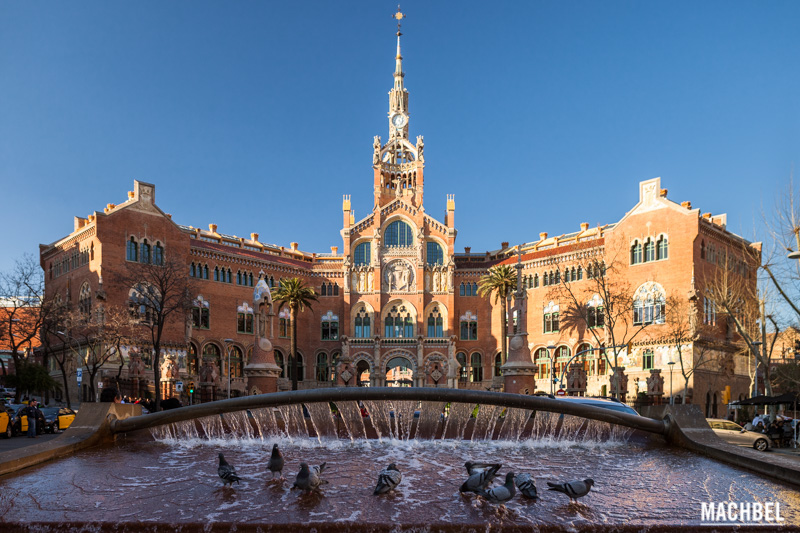
Hospital Santa Creu i Sant Pau
The hospital has existed for 500 years. In 1930, with money from the city budget and a donation from the Catalan banker Pau Gil, who died in Paris, a new complex was built. In his will, the financier mentioned what the medical facility should look like and asked to be named after St. Paul (San Pau). The government commissioned the talented architect Lewis Domenech y Montaner to develop the project, who was inspired by the most modern hospitals in Europe. After the death of the Art Nouveau master at 19In 23, the business was continued by his son Pere Domenech-y-Roura.
King Alfonso XIII attended the official opening of the Santa Creu i Sant Pau Hospital. Each department occupied one building. Inside, there was an air of understated elegance. Understanding the importance of open space and sunlight in the treatment of patients, the architects took care of good ventilation and sufficient natural light.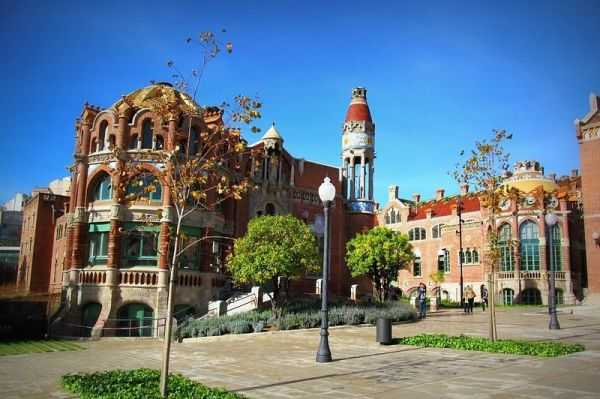
Over time, the Sant Pau City Hospital has become a famous landmark, an important cultural heritage site in Barcelona and Catalonia.
Sant Pau Modern Hospital
By the beginning of the 21st century, the buildings were very worn out, which made it difficult to meet the set of requirements for them and the quality of medical care. The institution could no longer cope with the growing demand for treatment. Therefore, in 2003, next to the old complex, the construction of a new Sant Pau hospital began, which met modern standards. The old buildings were vacated and restored with money allocated by the European Union. The Art Nouveau complex has become one of the most important museums in Europe and has gained international fame.
Architectural complex
Montaneru created the hospital as a series of separate pavilions, surrounded by gardens and interconnected by a network of underground tunnels. Although Domenech’s design called for a total of 48 buildings, only 27 of them were actually built, and only 16 matched the original design.
The complex consists of 12 pavilions located diagonally with respect to the blocks of the Eixample district. 2 axes are clearly distinguished, which run along the lines north-south and east-west, forming a large cross – the emblem of the old hospital of Santa Creu i Sant Pau. At the corner of the Eixample is the Administrative Pavilion. The room is decorated with arches and trencadís mosaics. In the hospital of Sant Pau, they are found everywhere. Trencadis, a technique for finishing surfaces with fragments of ceramic tiles, was widely used in Art Nouveau Catalan architecture.
The tour continues along a corridor with large windows and a mosaic ceiling. Guests look around the various rooms, all with impressive Art Nouveau details. Some rooms have screens showing information about the reconstruction of the old hospital and its transformation into a new landmark of the Catalan capital.
Leaving the halls of the Administrative Pavilion, visitors go down the stairs leading to the tunnel of the old hospital, along which orderlies with stretchers moved.
Buildings with different functions are different from each other. They are crowned with colorful roofs that are not typical for hospitals.
Science and Education Center
Organizations and institutions carrying out their projects in the fields of healthcare, ecology, education and culture work in the restored premises. Among them are Fundació Lluís Domenech i Montaner, EURORDIS, EMEA. The museum management provides organizations with premises for corporate events, professional meetings, courses, seminars, etc.
The Administrative Pavilion, the main building of historic Sant Pau, has been converted into a modern complex of multipurpose, functional spaces. The rich architecture and design of Domènech i Montanerou are successfully combined with modern technology.
Historical archive
The Historical Archive of the Santa Creu i Sant Pau Hospital is one of the most important of its kind in the world today.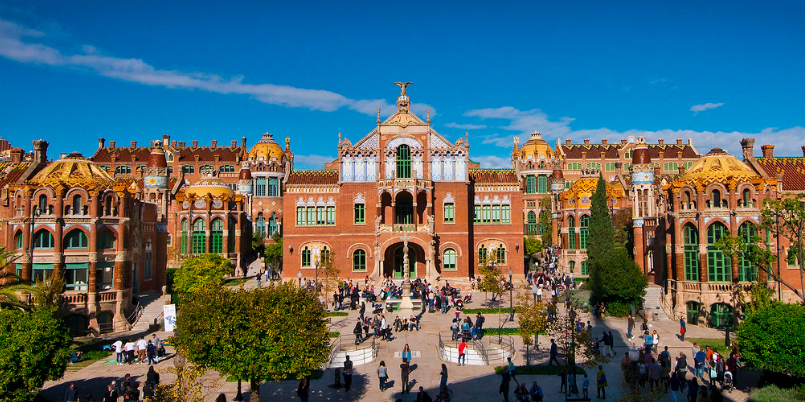
The archive currently occupies the new premises of the Administration pavilion. It has a reading room, provides information and copying services to ordinary users and researchers. Archive staff organize group visits to learn more about the large Catalan repository of ancient documents.
Excursions
The museum is open all year round. The pavilions often host temporary exhibitions. The old hospital of Sant Pau can be explored with a guide or on your own. Tours are conducted in different languages. Inside the buildings there are toilets, benches, elevators for visitors who need them. There are drinking fountains on the patio.
How to get there?
The complex is located in the Eixample district. Nearby is the Sant Pau / Dos de Maig metro station (line 5), a little further – the Guinardó Hospital de Sant Pau station (line 4).

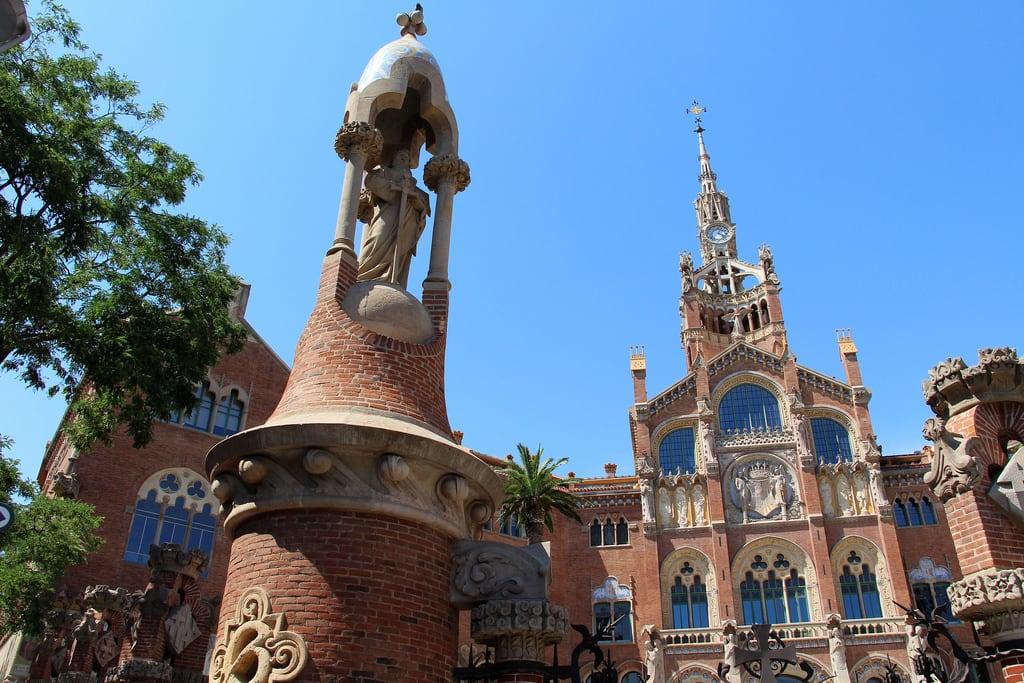 2 Modern hospital of Sant Pau
2 Modern hospital of Sant Pau 